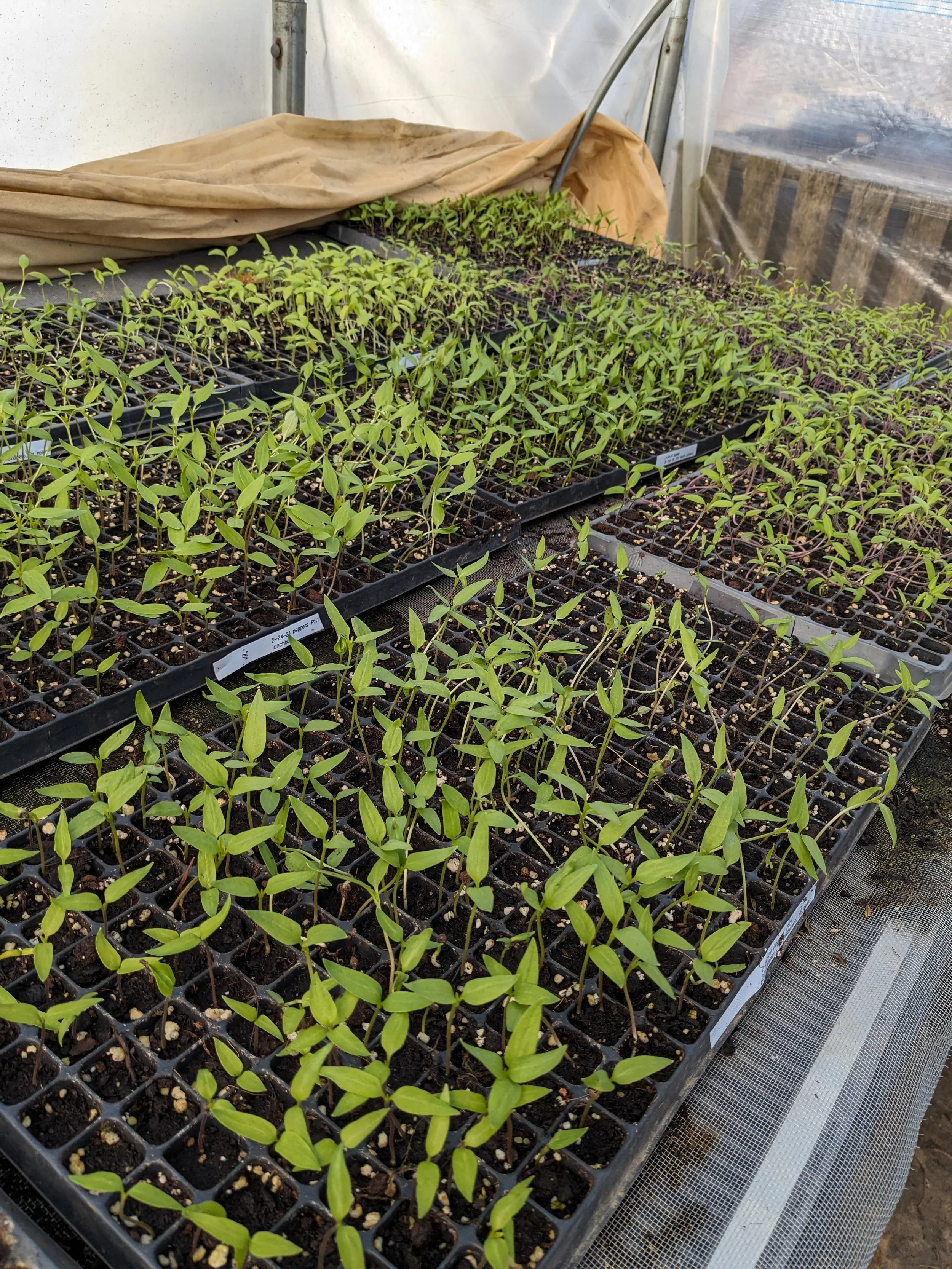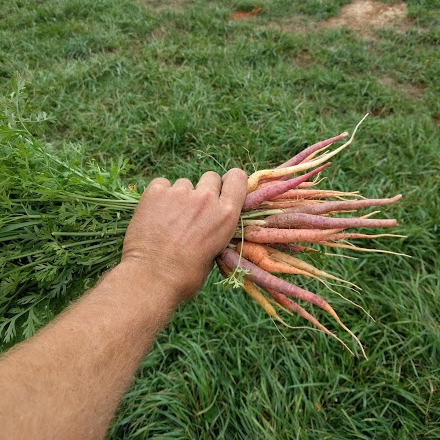Confusing weather.
I'm not gonna lie, I am tired. Even up on this hill, it has been hot and swampy and last night put us over 25 inches of in 2 weeks. It's an excellent time to remember that climate change is real, and, frankly, it sucks. The Mid-Atlantic, usually an ideally temperate region for growing vegetables from Long Island and to Richmond, is rapidly falling prey to prolonged bouts of weather extremes. This recent continual deluge and the 50 day mini-drought that preceded it are sadly just the new normal.
And it's because of problems like this one that we are very proud to have just received our USDA Organic Certification! Rodale Institute's research suggests that transitioning all of America's agriculture cropland to organic best practices would offset 40% America's TOTAL carbon emissions. Transitioning all of our cropland and pasture would offset 130%, effectively reversing the negative climate impacts of all the cars, trucks, power plants, and landfills in the country and then some.
To be sure, the requirements of the Organic logo are not as robust as they could be, especially in certain areas like poultry and egg production. Nor is buying organic foods produced thousands of miles away necessarily better than purchasing non-certified local crops. However, we wanted to participate because the label is the best thing we have. If we do want to turn America's cropland organic and protect our climate, air, and waterways, there's particular strength in organizing under one clear, recognizable, and trustworthy brand. As much as we are pleased to see the Organic logo on our products, we are just as proud to lend our name along with growing thousands of other small, regenerative farms to ensure the label keeps its strength and meaning for years to come.
We're certifiable!
Time of plenty
Wet as it may be, it's still August, and August is a time of plenty. We're eating something like 2 tomatoes and a cantaloupe per day. Plus, we're up to our eyeballs in snap beans. It really is fortunate that at this busiest time of year, we get to enjoy the fruits that require little, if any, preparation. For the record, I (Bryan) like my cantaloupe salted or with a little cottage cheese, and heirloom tomatoes are best on toast with a little mayonnaise.
For those of you who don't have to harvest until your arms fall off though, this is also a great time to avail yourself of summer's abundance and save some for later. We've added a few "bulk" item listings this week (tomatoes, tomatillos, snap beans, and cucumbers) for those of you so inclined. We hope to have all these listed for several weeks to come, so no need to rush all at once. With a week's notice, we can also order you your own half-bushel crate of peaches (24 lbs); please email us if you are interested.
But what should you do with them? Personally, I used to love canning. Then after managing about 400 quarts of tomato sauce per week for a few summers, I'm more inclined to freeze our bounty these days. Whichever way you save it though, I just highly recommend that you do it (and that if you're canning, go get some good canning pliers first). Below are links to ideas for the 4 bulk items we've put up. Experiment with your favorite flavors though.
Salsa Verde (I prefer a sweeter roasted salsa verde like this, but look up another recipe if you're more into tomatillos' fresher, more sour flavor)
Sour Pickles (You'll get an even crisper pickle that keeps longer if you throw in some flavorful tannic leaves like grape, oak, or horseradish, too. We just so happen to pack a few horseradish leaves with your bulk bag of cukes.).
Dilly Beans (A personal favorite. If you manage to not eat them all this week, they'll also keep forever.)
Roasted Tomatoes (My favorite canned tomato product is the roasted tomato. Roasting makes an already delicious thing taste even more... that. Plus I find it a more convenient way to remove the skins than the ice water bath method. In short, I've just never been disappointed that the bag of tomatoes I pulled out was roasted first.)
Thanks as always for your support and have a lovely week,
Bryan and Jo









































